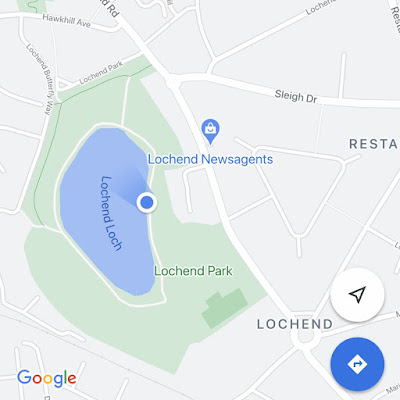Just along from Holy Corner at Greenhill in Edinburgh, down a quiet suburban street of nursing homes and large, villa type houses, there is what looks like a neat and well-kept garden. It is a place I have walked past many times and have always assumed it was part of the garden of the house that stands behind it. That is until a friend pointed out that it is actually the tomb of a long dead Edinburgh resident.
Today I took a walk there and wandered on in. I wasn’t convinced at first that I hadn’t actually just walked into somebody’s private garden, and was half expecting to be asked what I was doing there. But on going through the gate, I found myself in a small walled area with a large gravestone on one of the walls and realised it was indeed an old tomb that I was in.
The
tomb is the burial place of John Livingstone and his wife, Elizabeth Rig. Livingstone was an apothecary who lived in
Edinburgh in the 17th Century.
In 1636 he purchased the house and estate of Greenhill. At that time Greenhill lay well outside the
city boundaries and was within an area known as Burgh Muir. In 1645 the Black Death swept through
Scotland, killing many in Edinburgh, Leith, and the surrounding areas. Livingstone was one of those who succumbed to
the disease and he died shortly after falling ill. He was buried in the grounds of his house, rather
than in one of the many churchyards in Edinburgh, as laws introduced to deal
with the plague stipulated that the bodies of plague victims had to be buried
outside of the city. Livingstone’s house
was demolished many years ago and replaced with the suburban sprawl of Victorian
villas in which the tomb now sits.
On
the gravestone within the tomb, there is carved a grinning skull and crossbones
and underneath this are John Livingstone’s initials IL (I being an old way of
writing a J, as can be seen on the word judgement on the inscription). There is then an inscription that reads –
THIS SAINT WHOS CORPS LYES BURIED HEIR
LET ALL POSTERITIE ADMEIR
FOR VPRIGHT LIF IN GODLY FEIR
WHEN IUDGMENTS DID THIS LAND SURROUND
HE WITH GOD WAS WALKING FOUND
FOR WHICH FROM MIDST OF FERS HE'S CROUND
HEIR TO BE INTERRD BOTH HE
AND FRIENDS BY PROVIDENC AGRIE
NO AGE SHAL LOS HIS MEMORIE
HIS AGE 53 DIED 1645.
For
those who don’t want to work through the old spellings, a straight translation
is –
The saint
whose corpse lies buried here
Let all
posterity admire
For upright
life in Godly fear
When
judgements did this land surround
He with God
was walking found
For which
from midst of fears he’s crowned
Here to be
interred both he
And friends
by providence agree
No age shall lose his memory
There
is also an inscription in Latin above the carved skull and crossbones that
reads ‘MORS PATET, HORA LATET’. This
meaning - ‘Death is sure, the Hour obscure’ or to put it more simply, we are
all going to die, but don’t know when.
Cheery stuff.
In
the Book of the Old Edinburgh Club, Volume 3, there is a section by John Geddie
on the ‘Sculpted Stones of Edinburgh’.
In this he describes the tomb and includes the following sketch, which clearly
details the inscription.
Geddie
rather wryly points out that despite the inscription stating Livingstone’s
memory will not be lost, nowadays nobody does actually remember him or his
‘saintly qualities’.
Over
the years the tomb fell into a state of disrepair. In 1984 the council carried out research to
see who owned it, as they wanted to issue them with a notice to carry out the
work that was needed. However, their
research led them to realise that the tomb was owned by no-one, so they took it
into their ownership and then carried out extensive repairs. The restored tomb and forecourt were
re-opened to the public in 1999.
I
placed the Skulferatu that accompanied me on todays trip in a gap in the wall
opposite the gravestone.
The
coordinates for the location of the Skulferatu are –
Latitude
55.934420
Longitude
-3.205961
I
used the following sources for information on John Livingstone’s Tomb –
Plaque on wall of tomb
Wikipedia Page on Greenhill,
Edinburgh
Greenhill,
Edinburgh - Wikipedia
Historic Environment Scotland
Website – Article on Tomb
Historic
Environment Scotland - Tomb of John Livingstone
Canmore Website
Canmore
- John Livingstone's Tomb
The Book of the Old Edinburgh
Club, Third Volume
The Sculptured Stones of
Edinburgh
By John Geddie
Published 1910


















